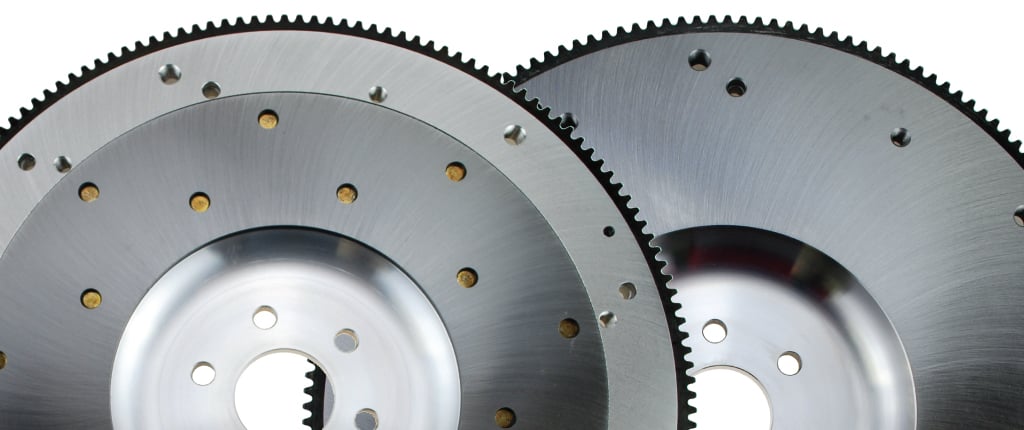
Debunking the Myth of Flywheel Selection
In our last post we discussed selecting the proper clutch for your application based on load factors the clutch will experience. Today we tackle the dos and don’ts of selecting the correct flywheel for your application.
Have you ever heard this line before? ‘Put in a lighter flywheel and you will make more horsepower.’ Some manufacturers will tell you this, and it is simply false. Heck, I once had a customer who was told a light flywheel would ‘increase his gas mileage!’ Is it possible for a lighter flywheel to create quicker engine acceleration? It can, depending on the gearing of the car. Will it allow the car to decelerate quicker? Absolutely. This is why circle track and autocross racers want to use the lightest possible flywheel and clutch combination for their vehicle. It allows the car to drive deeper into the turns and have the RPM drop quicker as they let off the throttle. The engine can then accelerate back into the peak range quicker out of the turn.
For your street driven car, flywheel selection is critical to the driveability of your vehicle. The job of the flywheel is to transmit inertia to help get the car moving; be it pulling away from a stop sign, or leaving the starting line at the drag strip. The proper flywheel weight, in conjunction with the correct gearing, will optimize your driving experience. Other load factors discussed in “It’s all about the load, silly!” will also affect this, such as vehicle weight.


